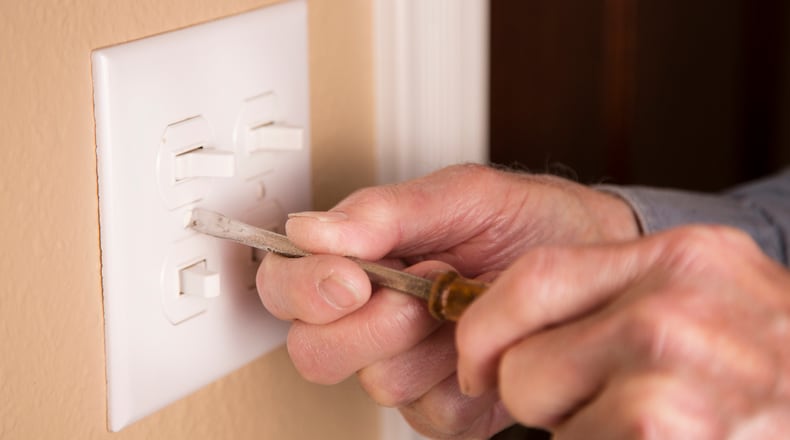Set thermostats back by at least eight degrees when you are sleeping or away from home
If you set your thermostat at 70 degrees when you wake up, set it back to 62 degrees when you leave for the day and set it back to 70 when you return home. Set it back again when you go to bed. This is easier with a programmable or wi-fi enabled thermostat that allows users to set and change temperatures through a mobile app. AES says that proper use of these thermostats can save up to $180 annually in energy costs.
Change or clean your furnace air filter once a month
Dust and dirt will make your furnace work harder, costing you more money. Also have your system inspected annually and have it tuned up so it will run more efficiently.
Check to ensure your duct work is not loose
Make sure heat isn’t escaping outside, and make sure draperies and furniture aren’t blocking airflow. Air leaks around the home can cost money since the heated air is escaping and not staying where you need it. Be sure to seal any leaks and add insulation to make your home more energy efficient. And never cover attic vents or recessed lighting fixtures with insulation, which is a safety hazard.
While shopping for insulation, follow these tips:
1. Shop by R-Value. The higher this value, the better you will be insulated.
2. Install do it yourself foam insulators behind your switch plates and outlets. These are easy to find in any local hardware or home store. Just be sure to turn off the power before installing.
3. Invest in blanket installation if your basement isn’t heated and put it in between exposed floor joints.
4. Prevent your hot water pipes from freezing by insulating them. The US Department of Energy website has details about this easy and inexpensive do it yourself project.
Take advantage of sunny days and open curtains and shades to let the warmth in. Just remember to close again at night to keep the cold air out. And don’t forget to add area rugs to cover hard floors. These not only add a warmer look to your home, but also help keep you warm.
Have you ever thought about running your ceiling fans in the wintertime? Reversing them to turn clockwise and setting them to run at low speed will help circulate the warm air.
Weather stripping is also an easy and inexpensive item that will help lower those monthly bills. Seal doors and windows and any other place you can feel cold air coming inside. You can also use expanding foam to seal openings around water spigots, dryer vents and gas pipes.
If you are not a “do it yourselfer,” the U.S. Dept. of Energy offers a weatherization assistance program that offers a wide range of services tailored to your home’s specific needs. This could include sealing air leaks around windows and doors, adding insulation to walls, attics and basements, heating and cooling system tune ups or replacements, installing energy efficient lighting and appliances, installing low flow water fixtures to reduce hot water usage and addressing health and safety issues like carbon monoxide leaks.
This program is federally funded through the Weatherization Assistance Program and is designed to help income-eligible households improve their homes energy efficiency and lower utility costs. It is offered at no cost to eligible households with families, the elderly and individuals with disabilities given priority.
About the Author


